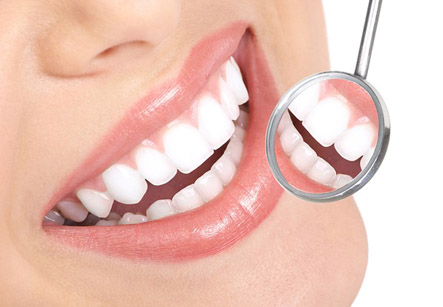Oral Cancer Screening
Introduction
Oral cancer is a disease in which abnormal malignant (cancer) cells form in the lips, oral cavity, or oropharynx. Screening is looking for cancer before development of any symptoms. This can help find cancer at an early stage and proper treatment can be started. By the time symptoms appear, cancer may have already spread to distant sites.
It is a precautionary measure. It does not necessarily mean that the patient has cancer, if the doctor has suggested a screening test. If a screening test result is abnormal, further tests are done to confirm the diagnosis of cancer. These are called diagnostic tests.
Oral cancer can develop in any of the following areas of the oral cavity and oropharynx commonly:
1. The lips
2. Front two thirds of the tongue
3. The gingiva (gums).
4. The inner cheek or buccal mucosa.
Iran offers a superior Dental treatments that is world best quality. For patients from the USA, and Europe for example, the savings can be 60% or more

5. The floor of the mouth under the tongue.
6. The hard palate.
7. The retromolartrigone (the small area behind the wisdom teeth).
8. The middle part of the pharynx behind the mouth.
9. The posterior one third of the tongue.
10. The soft palate
11. The side and back walls of the throat.
12. The tonsils.
The risk factors for developing oral cancer:
The risk factor is defined as anything that increases the chance of getting a disease. Presence of a risk factor does not mean that the patient will get cancer; and also absence of risk factors does not mean that the patient will not get cancer. Risk factors for oral cancer include the following:
1. Use of tobacco products such as cigarettes, cigars, pipes, and smokeless and chewing tobacco.
2. Excessive alcohol intake.
3. Betel nut chewing.
4. Infection with certain types of human papillomavirus (HPV).
5. Over exposure to sunlight (for lip cancer only).
6. Male sex
Oral Cancer Screening:
Various tests are performed to screen for different types of cancer. However, there is no standard or routine screening test for oral cancer. These are as follows:
1. Routine check-up by a dentist or doctor. The examination includes looking for lesions, such as areas of leukoplakia (an abnormal white patch of cells) and erythroplakia (an abnormal red patch of cells). These lesions are considered as pre-cancerous. If lesions are found in the mouth, further procedures are performed.
2. Toluidine blue stain. In this procedure, the lesions in the mouth are coated with a blue dye. Areas staining darker have possibility of harboring cancer or becoming cancerous.
3. Fluorescence staining. The lesions in the mouth are viewed using a special light after the patient rinses the mouth with a fluorescent rinse. Normal tissue looks different from abnormal tissue when seen under the light.
4. Exfoliative cytology. In this procedure, the cells are collected from the lip or oral cavity by a piece of cotton, a brush, or a small wooden stick, which gentle scraping. The cells are viewed under a microscope to find any abnormality.
5. Brush biopsy. A special brush is used to collect cells from all layers of a lesion. These cells are viewed under a microscope to find out any abnormality.
More than half of oral cancers have already spread to lymph nodes or other areas at the time of diagnosis. The screening tests may not decrease the risk of dying from cancer.
The risks of oral cancer screening include the following:
1. Finding the oral cancer may not improve health or increase the life expectancy of the patient.
2. Over-diagnosis. Some cancers usually never cause symptoms or become life-threatening. However, if they are found by a screening test, treatment may be given. This is called as over-diagnosis. It is still doubtful whether the treatment of these cancers can increase the life of the patient or not. Also, the treatments for cancer, such as surgery and radiation therapy, usually have serious side effects.
3. Screening can also find oral cancers that have already spread and cannot be cured. In such cases the treatment can cause serious side effects and may not be useful.
4. False negative results. In this case, the screening tests are normal even though the oral cancer is present. This may dangerously delay the patient in seeking medical care even in presence of symptoms.
5. False-positive results. The screening test may appear to be abnormal even though no cancer is present. A false-positive test result can cause unnecessary stress and anxiety to the patient and is usually followed by a battery of tests and procedures which may not be required.
6. Misdiagnosis. A biopsy or removal of small tissue from suspected area of cancer and its examination under microscope by pathologist is required to confirm cancer diagnosis. If the presence of cancer is missed by the pathologist by mistake, it is called as a misdiagnosis. This causes same consequences as in case of false negative result.